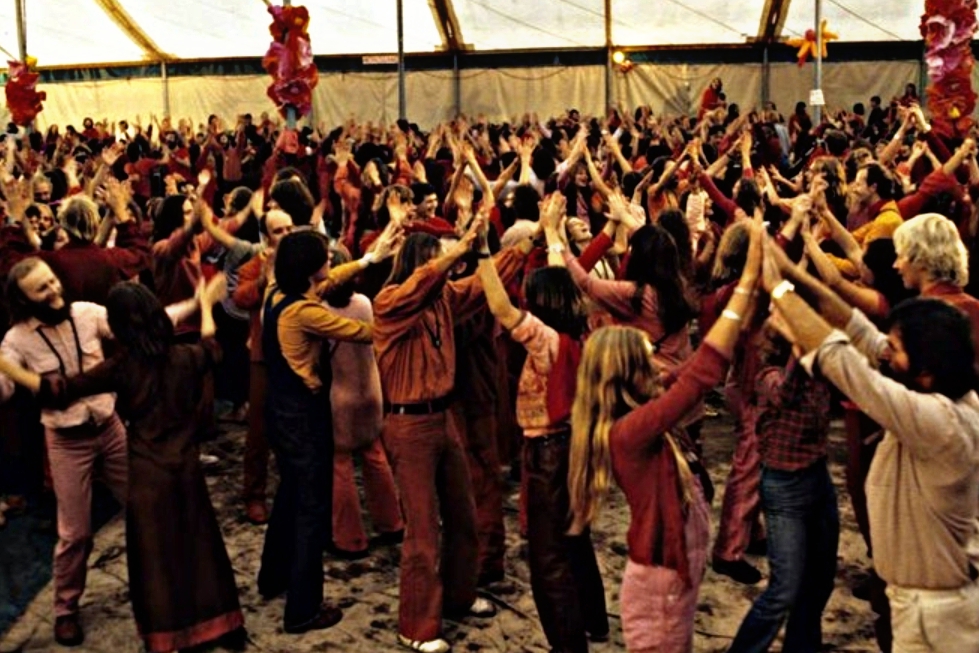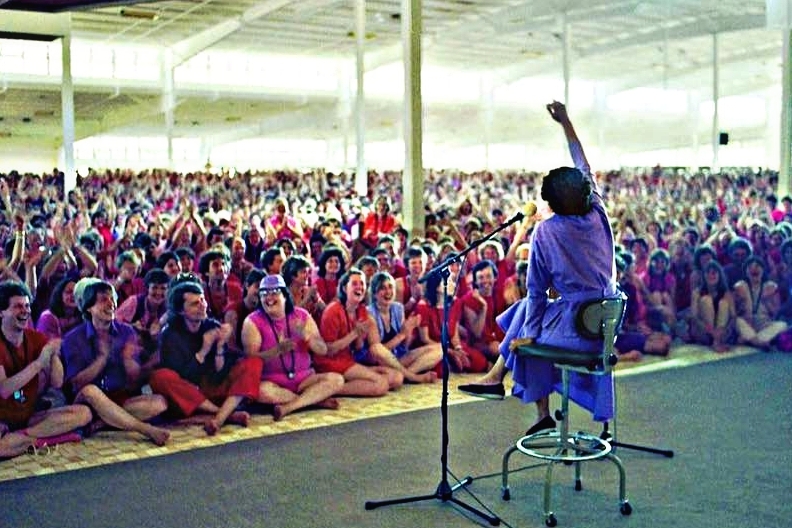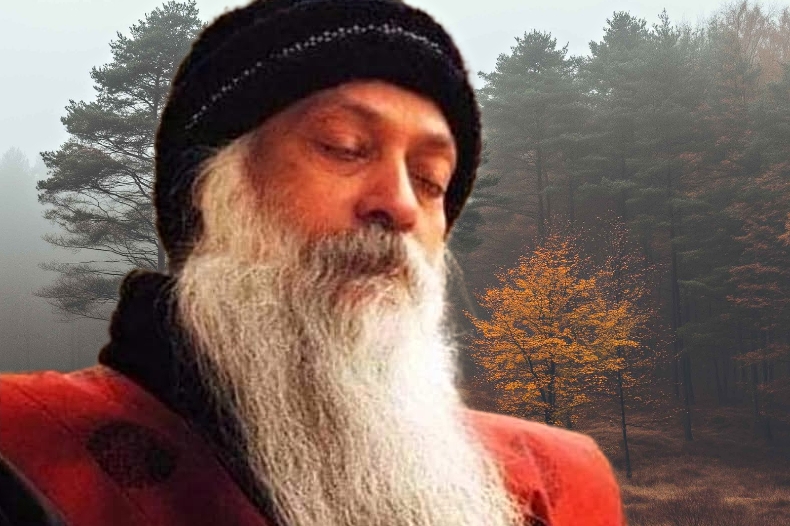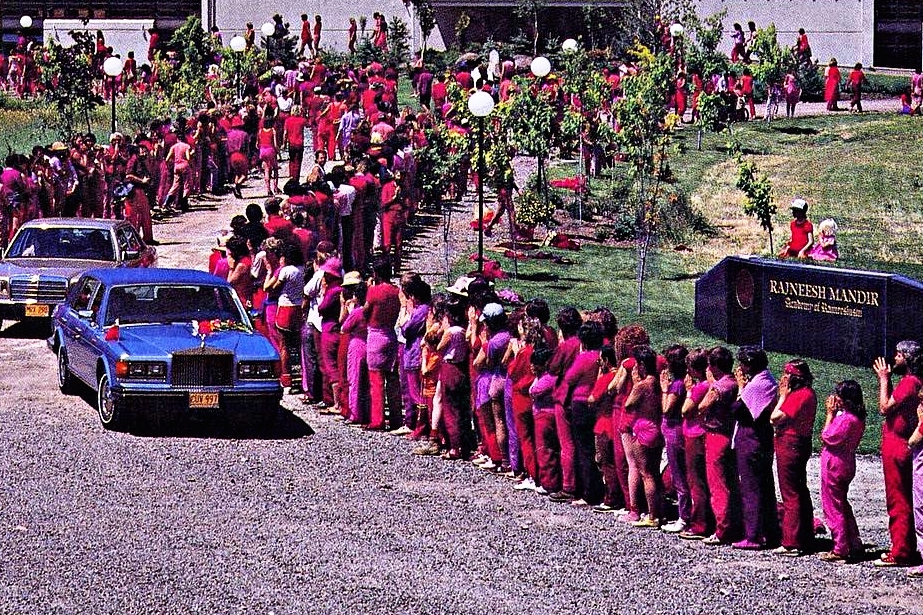Rajneeshpuram, a unique and ambitious commune established in the remote deserts of Oregon in the early 1980s, remains one of the most discussed and debated experiments in modern spiritual and social history. The brainchild of Indian spiritual leader Rajneesh Osho and his dedicated followers, Rajneeshpuram was envisioned as a utopian society that blended spirituality, community living, and self-sufficiency.
However, the commune’s rise was as meteoric as its fall, marred by controversies, legal battles, and accusations that culminated in its eventual dismantling. .
The Birth of Rajneeshpuram

The Vision
Rajneesh Osho, also known as Shree Rajneesh, was a charismatic and unconventional spiritual leader who challenged traditional religious norms. By the late 1970s, his following had grown exponentially, with disciples from across the globe flocking to his ashram in Pune, India.
However, escalating conflicts with Indian authorities over land use and visa issues prompted Osho and his community to seek a new home. They envisioned creating a spiritual commune that would embody his teachings of meditation, creativity, and self-awareness. This vision gave birth to Rajneeshpuram.
Finding a Location
In 1981, Osho’s followers purchased a sprawling 64,000-acre ranch in Wasco County, Oregon. Located in a secluded area, the land offered both privacy and the challenge of transforming an arid desert into a thriving community.
The Name
The commune was named “Rajneeshpuram,” meaning “City of Rajneesh,” symbolizing a spiritual haven dedicated to Osho’s philosophies.
Building Rajneeshpuram

Transformation of the Land
Turning the barren ranch into Rajneeshpuram required immense effort. Followers, known as sannyasins, worked tirelessly to construct infrastructure, including roads, residential buildings, a water reservoir, a dam, and a state-of-the-art meditation hall.
A Self-Sufficient Community
Rajneeshpuram was designed to be entirely self-sufficient. The community built farms, schools, hospitals, and even an airport. Advanced farming techniques allowed the desert land to yield crops, while the commune’s workshops produced goods for internal use and trade.
A Vibrant Lifestyle
The commune thrived as a vibrant, dynamic community. Sannyasins lived communally, wearing maroon robes and beads symbolizing their connection to Osho. They meditated, worked, and participated in various creative and therapeutic activities.
The Philosophy Behind Rajneeshpuram

At the heart of Rajneeshpuram was Osho’s philosophy, which combined elements of Eastern spirituality and Western existentialism. Key principles included:
- Meditation as the Core:
Daily meditation practices were central to life in Rajneeshpuram. Dynamic Meditation, a technique designed by Osho, was particularly popular. - Freedom and Creativity:
The commune encouraged individuality, self-expression, and creativity, breaking away from traditional societal norms. - Rejection of Conventional Morality:
Osho advocated for a more open and liberated lifestyle, challenging conservative ideas about relationships, sexuality, and material wealth. - Harmony with Nature:
The transformation of a harsh desert into a flourishing commune symbolized the community’s commitment to sustainable living and resilience.
The Controversies Surrounding Rajneeshpuram

While Rajneeshpuram began as an ambitious utopian project, it quickly became embroiled in controversies that overshadowed its ideals.
Conflicts with Local Communities
The rapid expansion of Rajneeshpuram caused tensions with the local population of Wasco County. The predominantly conservative residents viewed the commune’s practices as a threat to their way of life.
Political Ambitions
To gain political control of the area, the commune’s leadership encouraged thousands of homeless individuals to join Rajneeshpuram and vote in local elections. This strategy, dubbed the “Share-a-Home” program, sparked outrage and accusations of voter manipulation.
Legal Battles
Rajneeshpuram faced multiple legal challenges, including zoning disputes and allegations of immigration fraud. Critics argued that the commune violated state and federal laws in its quest to establish an autonomous city.
The Bioterrorism Scandal
One of the most infamous events associated with Rajneesh puram was a bioterror attack in 1984. Members of the commune poisoned salad bars in nearby restaurants with salmonella, sickening over 750 people. The attack, orchestrated by key leaders of the commune, was intended to suppress voter turnout during local elections.
The Fall of Rajneeshpuram

By 1985, the controversies surrounding Rajneesh puram had reached a breaking point. Osho publicly accused his secretary, Ma Anand Sheela, of masterminding illegal activities without his consent. Sheela fled the commune, leaving behind a community in disarray.
Osho himself was arrested on charges of immigration fraud and deported from the United States. With its leader gone and legal pressures mounting, Rajneeshpuram began to disband.
Innovations at Rajneeshpuram
Ecological Transformation
One of the most remarkable achievements of Rajneeshpuram was its ecological transformation. The arid ranch land was turned into a flourishing oasis through sustainable agricultural practices, water management systems, and innovative engineering.
The commune’s efforts included:
- Building a dam and reservoir to ensure a steady water supply.
- Establishing organic farms that produced fruits, vegetables, and grains for the community.
- Utilizing renewable energy sources like solar panels to power operations.
Architecture and Design
Rajneeshpuram’s infrastructure was meticulously planned. From modern housing facilities to a grand meditation hall capable of hosting thousands, the commune reflected a blend of functionality and aesthetic appeal. The use of locally sourced materials and environmentally conscious designs showcased the commune’s commitment to sustainability.
Legacy of Rajneeshpuram

Although ceased to exist as a physical commune, its legacy endures as a subject of fascination, debate, and inspiration.
Cultural Impact
Rajneesh puram has been the focus of numerous books, documentaries, and films, most notably the Netflix series Wild Wild Country, which brought the story to a global audience.
Spiritual Legacy
While the commune itself failed, the teachings of Rajneesh Osho continue to resonate. His discourses and meditation techniques are widely practiced, and his books remain bestsellers in spiritual literature.
Lessons Learned
The story of Rajneesh puram offers valuable lessons about the complexities of building alternative communities. It highlights the challenges of balancing idealism with practicality, as well as the dangers of unchecked power and ambition.
Rajneeshpuram in Retrospect
Rajneesh puram was a bold experiment that sought to redefine spirituality, community living, and human potential. Despite its controversies and ultimate demise, it remains a powerful reminder of the enduring quest for meaning, connection, and a better way of life.
For those willing to look beyond the scandals, RajneeshOsho offers insights into the possibilities and pitfalls of utopian dreams. It stands as a testament to human creativity, resilience, and the timeless pursuit of a harmonious and enlightened existence.

